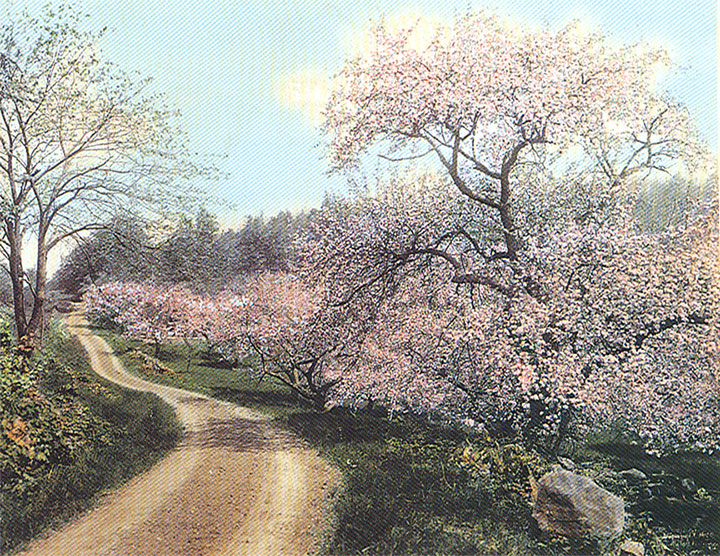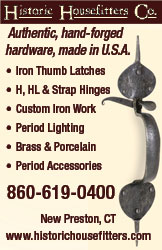
Home Structural Products & Services, Stairlifts
Structural Products & Services, Stairlifts
Furniture, Clocks,
Accessories
Antiques, Folk Art,
Fine Art, Auction Houses
![]()
100th ANNIVERSARY OF TREASURED LANDMARK
by Julie Winkel
| Among the “ten commandments” Wallace Nutting distributed to the workers building his line of furniture was the decree: ‘Let nothing leave your hands until you are proud of the work.” Nutting’s attention to detail and his groundbreaking accomplishments in promoting American history and antiques will be celebrated in “Wallace Nutting: Preservation Pioneer,” an exhibition that will debut exactly 100 years after Nutting opened the historic Joseph Webb House to the public for the first time, on July 4, 1916. An opening reception, with light refreshments, will be held on July 4, 2016, from noon to 3 p.m. The exhibit, in collaboration with The Wallace Nutting Collector’s Club, will remain through October 30, 2016. Admission to the opening is free. Admission to the exhibit on subsequent dates will be $10. |
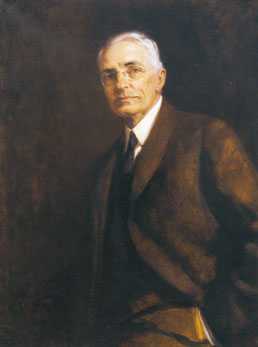 Portrait of Wallace Nutting Photo: Wadsworth Atheneum |
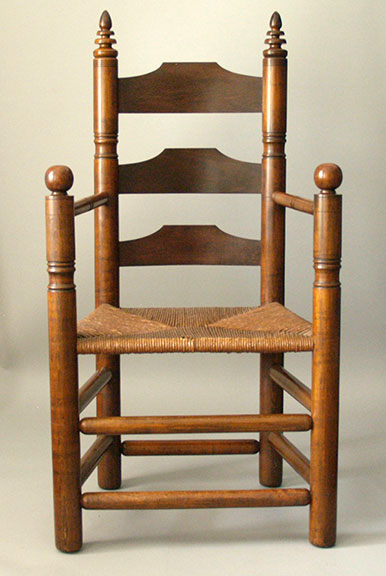 Nutting Pilgrim Chair, c.1920.; On loan from Susan and Gary Leonard |
The Joseph Webb House is the heart of the Webb-Deane-Stevens Museum, and is best known as the home where General George Washington stayed for five nights in 1781 while he and French General Rochambeau planned the military campaign leading to the end of the Revolutionary War.
When Nutting acquired the Webb House in 1916, he named it “Hospitality Hall,” making it part of his “Chain of Colonial Picture Houses” —historic sites in New England that were part of Nutting’s business plan to promote a nostalgic appreciation of “Old America.” From the beginning, Nutting intended to use the Webb House primarily as a Visitors to the “Wallace Nutting: Preservation Pioneer” exhibit will ultimately gain a better understanding of how the Colonial Revival has shaped our contemporary perceptions about colonial America. Lyle has acquired Nutting furniture, ironwork, wooden treenware and a number of hand-colored prints for the exhibit, with many of the items on loan from members of the Wallace Nutting Collector’s Club. Lyle has also recreated a scene in the Webb House that is depicted in one of Nutting’s most famous prints, “Birthday Flowers,” using a mannequin in reproduction 18th-century clothing, and other distinguishing details. A related lecture series is planned for the fall; speakers will include noted Nutting author, antiques dealer, and auctioneer, Michael Ivankovich. Nutting’s restoration of the Webb House in 1916 included a number of murals, many of which can be seen today due to restoration by the museum several years ago. Nutting had the center hall decorated with painted murals depicting romanticized views of European castles, but they were painted over in the 1920s and cannot be restored. The most prominent features of Nutting’s Webb House restoration that remain are the historic murals in the two front parlors. The southeast (“Yorktown”) parlor murals depict the famous council of war between George Washington and the comte de Rochambeau. Also portrayed is the British surrender at Yorktown. The northwest parlor murals capture noteworthy historic houses in imaginary landscapes, including several of the other “links” in his chain of houses. Other rooms in the Webb House were also used as stage sets for Nutting’s photographs. |
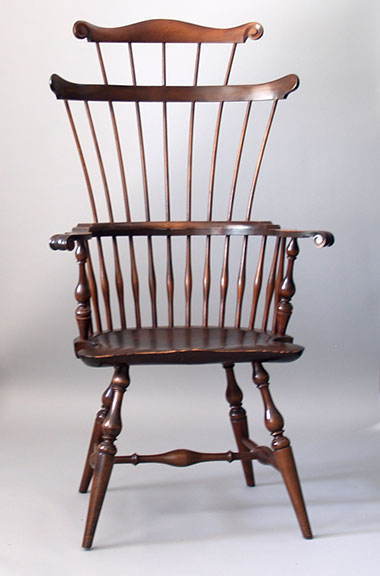 Double Comb Back Windsor Chair, c.1920 - Lent by Charles Lyle |
|
| Nutting opened the Webb House to the public on July 4, 1916, with a 25-cent admission charge. During the first two years of operation there were over 2,000 visitors. But Lyle notes that America’s entry into World War I, and the subsequent rationing of gas, seriously affected automobile touring. Nutting had no choice but to close the house and he sold it to the Connecticut Society of Colonial Dames in 1919. It has remained in their care ever since. In 1925, Nutting sold his furniture collection to J. Pierpont Morgan, Jr., who donated it to the Wadsworth Atheneum in Hartford. As a result, today the Atheneum claims the most important collection of "Pilgrim Century" furniture in the nation. |
 Wallace Nutting, Apple Pie, 1915. WDS Collection |
